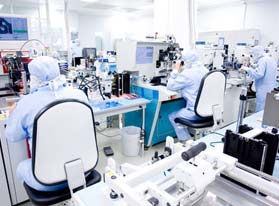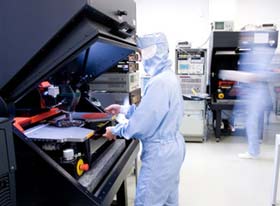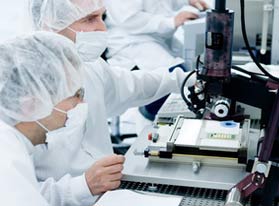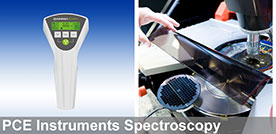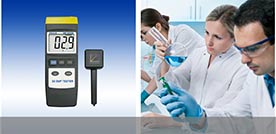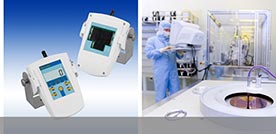|
Spectroscopy
On this page, you will find plenty of information about spectroscopy. Spectroscopy describes a field of methods to study the energy spectrum of a sample by fragmenting the radiation according to its energy level. Devices for the visual examination of optic spectrums are called spectroscopes. Furthermore, there are devices to record the spectrums. These are called spectrometers, which besides operating at different ranges of the electromagnetic spectrum, also are suitable for measurement and recording of particles such as electrons and ions.
The fundaments of spectroscopy where laid by Joseph von Fraunhofer, who invented the spectroscope. He was even the one who discovered in 1814 the Fraunhofer lines in the solar spectrum, which was named after him. But Fraunhofer was not able to explain the origin of these lines. The research of Robert Bunsen and Gustav Kirchhoff were based on these. 45 years later, they discovered that different chemical elements change the flame of a gas burner. Due to this process the attention was turned to the compositions of samples. Quantitative measuring, e.g. concentrations, is called spectrometry. The field of spectroscopy provided decisive impulses for the development of quantum mechanics and offers further clues about the chemical structure of unknown substances. The precision with which spectral lines can be measured allows the determination of physical constants. Furthermore, it provides the possibility of verifying proclamations on physical constants. In addition, due to spectroscopy, the definition of the base units meter and second can be reviewed.
Conventional spectroscopy determines light emission and absorption of molecules and atoms by means of grating and prism spectrometers. This research method is the oldest process of spectroscopy, thus it is called conventional spectroscopy. Conventional spectroscopy and the development of high resolution grating and prism spectroscopes allow basic researches on the organization of atoms.
If you can't find the
spectroscopy equipment you are looking for, please contact us and we will help you find the best solution which suits your needs:
 UK customers +44(0) 23 809 870 30 / UK customers +44(0) 23 809 870 30 /  US customers (561) 320-9162. Our technical staff will advise you regarding our products. Our engineers and technicians will be happy to help you with the
spectroscopy
equipment, and of course, with the other products in the field of
regulation and
control, measuring
instruments or scales
and balances of PCE
Instruments Ltd. US customers (561) 320-9162. Our technical staff will advise you regarding our products. Our engineers and technicians will be happy to help you with the
spectroscopy
equipment, and of course, with the other products in the field of
regulation and
control, measuring
instruments or scales
and balances of PCE
Instruments Ltd.
|



